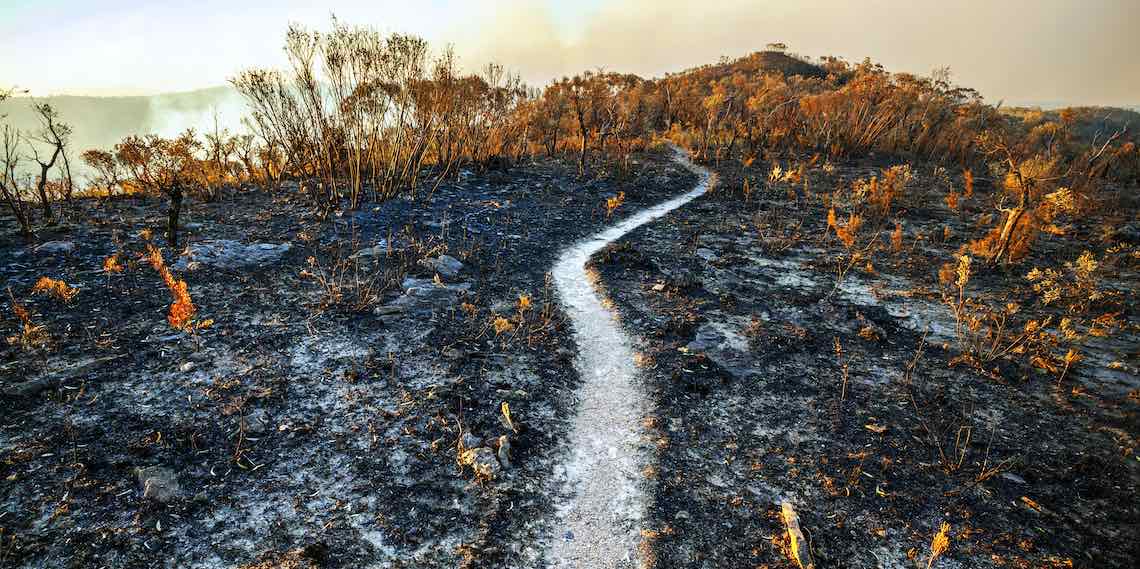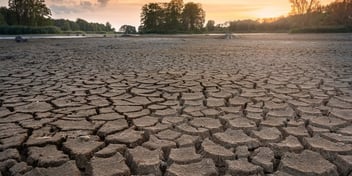Getting real about resilience: readying for a changing climate

As extreme weather events around Australia continue to break records within a changing climate, effectively managing the impacts of increasingly severe risks requires a more nuanced understanding of resilience and how it relates to our systems and communities.
According to CSIRO Land and Water Director Jane Coram, building resilience is all about knowing what "being resilient" actually means in relation to the systems we work within, and what level of resilience we are able to plan for and invest in.
“The word ‘resilience’ gets thrown around a lot, with the implication that it's a good thing. But, actually, resilience is neither good nor bad. It's simply a property of the system,” she said.
“When we say we want to become more resilient to extreme events, what we really want to do is adapt our systems to meet the demands of climate change.
“Resilience implies that we can maintain our systems as they are. But as the climate changes, how our systems are impacted is going to change, too. Our systems will change dynamically, and it might not be possible for us to step back to a prior state.”
Coram said that while planning, preparing and adapting is certainly required, we may need to plan for the maintenance of a different system — for something other than what we have at the moment.
“We may end up having to think about what we actually keep the same,” she said.
“This is about understanding the systems that we’re working within, and then being adaptable so that we can keep those systems functioning.”
Open to change
In order to tackle the ongoing challenge of becoming resilient in the right ways, Coram said being open-minded will be important as we deal with increasing uncertainties.
“We frequently plan around the most likely outcomes based on modelling of historical data. But it's often the extreme events that really challenge our management systems and our capacity to recover — as we have seen in the droughts, floods and bushfires of recent years,” she said.
“So, we need to be planning around what the most likely outcome is and also the extreme, less likely events that could tip our systems over a particular threshold.”
How well society is able to respond to climate disasters will depend on how quickly we can come to terms with these risks, Coram said, which are already being felt, particularly in Australia.
“In the coming years, we are predicted to see a continuation of recent years where extreme events have been occurring more frequently. We are seeing many things happen within the scale of a human life now. The danger is that it will continue to speed up,” Coram said.
“Climate change poses some very high-risk situations, but we have tended to approach these extreme events as one-offs. We now have to be a lot more open-minded towards what future extremes could be. And we need to be on the same page.
“Understanding the scale of the challenge will require a sophisticated and integrated approach, but also a creative approach, as we look for alternative responses. We really need coordinated and proactive planning across all levels of government, industry, and community to tackle these challenges together.”
Understanding risk
While considerable effort has been placed on trying to predict the severity of future extreme events, Coram said building resilience is about more than understanding how these events might unfold; it’s about understanding the risks they pose to the things we value and prioritising the actions needed to protect those values.
“There’s a difference between extreme events and disasters. An extreme event, like a category five cyclone, is not a disaster if it's out at sea. It's only a disaster when it impacts on things that we value,” she said.
“It’s really important to understand natural hazards, especially when they are changing, but most of the risks and the ways that we reduce disaster don't flow from the detailed understanding of the hazard alone.
“How we become resilient in relation to these events is about getting very clear on the values that will be impacted, and how we manage our communities’ exposure and vulnerability. The management levers we have for reducing harm and damage, they're in our hands.
“We can't necessarily change the extreme event, but we have power in terms of planning to reduce the risk to people and to our infrastructure.”
Coram said coming to terms with how risks affect what we value is becoming urgent, as the negative effects of increasing climate risks are already touching the lives of Australians.
“We’ve very recently had lots of new extreme records occur. We've had our hottest and driest year in 2019, with a record-breaking number of days over 39 degrees. We've had three widespread marine heat waves during a period of 2016 to 2020,” she said.
“We've also had three major floods in eastern Australia during the previous three years, and no one's forgotten the major fires in southern and eastern Australia during 2019 to 2020. In Australia, we’re breaking records on both sides of our climate extremities.
“Liveability in cities, functionality of infrastructure and health related issues, like heat-related deaths and mental health issues — the effects of these issues are really starting to be felt. And these things are exacerbated by other challenges, too, such as COVID.”
The Australian water sector has been closely attuned to climate risk for a long time now, Coram said, and has an opportunity to play a significant role in leading other industries towards resilient futures, too.
“Climate risks are projected to increase for a wide range of systems, sectors and communities. And how we respond to those climate changes is going to depend on the underlying vulnerabilities and exposures of those sectors,” she said.
“While the water sector is certainly at the forefront, I don't think there'll be any sector that's untouched by it. And the challenges compound once multiple sectors are affected.
“The water sector will be really important in helping navigate our way through the challenges of climate change. Some of the risks can be reduced by adaptation if we can step up fast enough. Being fast enough is the challenge.”


